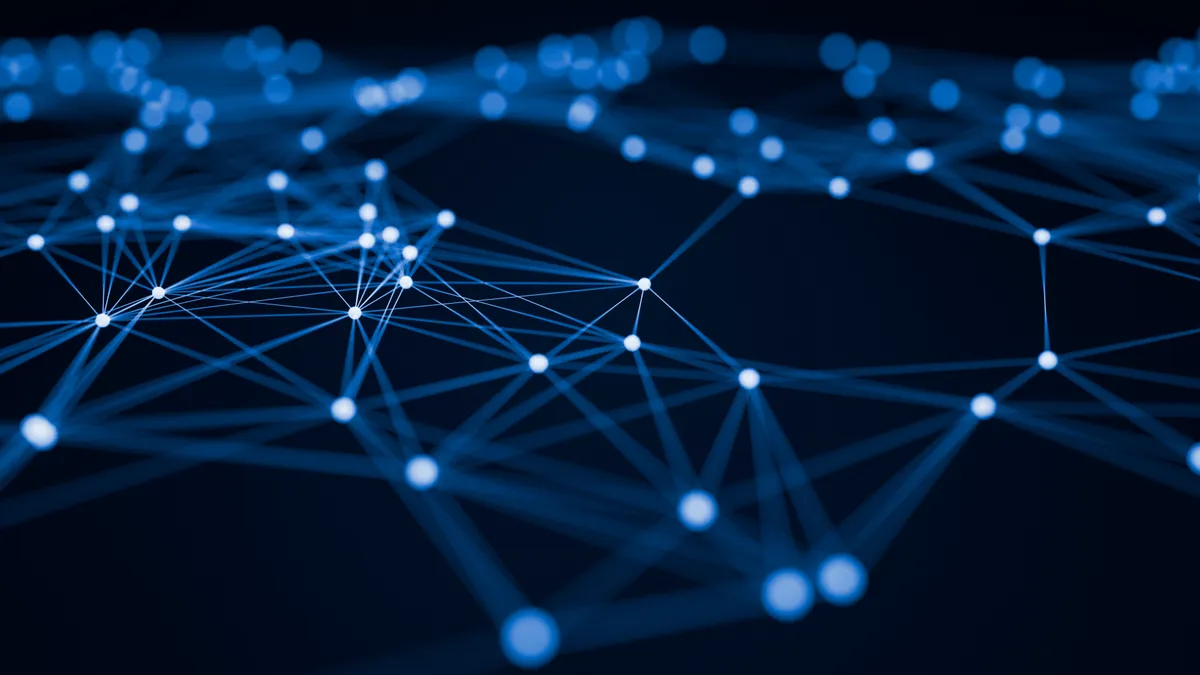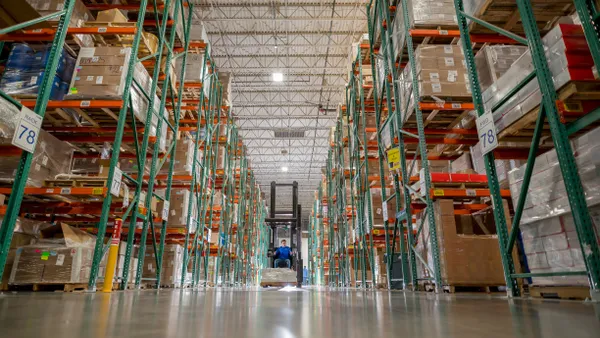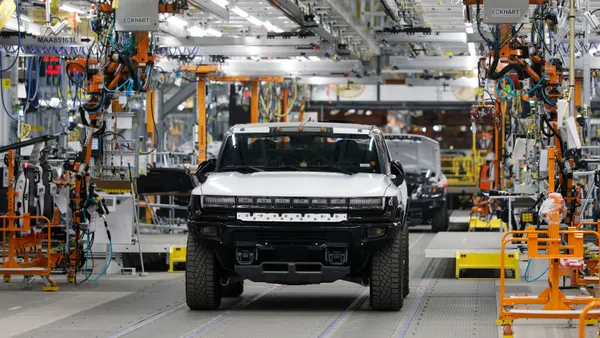Dive Brief:
- Among industries spending on Internet of Things (IoT) technology, the track-and-trace sector is expected to have the largest spending growth — a 24.2% increase — on IoT devices between 2017 and 2023. Inventory and supply chain management is expected to see a 20.2% increase in spending during the same time period, according to a report from Forrester.
- Total global spending on IoT technology is expected to increase from $186 billion in 2017 to $435 billion in 2023, according to the Forrester forecast.
- Forrester sees Deloitte, IBM, Accenture, HCL Technologies and Atos as "leading the pack" in the IoT space according to a separate report on the IoT industry from last year.
Dive Insight:
A definition of IoT products has been a sticking point for legislation involving the technology, but broadly speaking, it refers to any device that connects to the internet other than your standard laptop, desktop or smartphone. When combined with various sensors, it's easy to see how the ability to share data quickly over the internet can come in handy for supply chain operators.
While spending might be starting to speed up now, this line of thinking around data sharing has been around for a number of years. Deloitte argued in 2015, "information provided by IoT deployments allows supply chains to invest less in eliminating variation because timely and effective responses are now possible, and instead to use variation as a foundation for new types of competitive advantage and even as a driver of innovation."
Noha Tohamy, a vice president of supply chain at Gartner, argued a similar point in 2015.
"With the IoT, the supply chain will have unprecedented access to data valued by internal and external stakeholders," Tohamy said. "This presents an opportunity for supply chain groups to co-develop new information-based solutions for individual customers or markets."
These points must have hit home with carriers, logistics providers and other supply chain operators, as many of these companies have since announced IoT projects they say will provide them greater transparency or help in eliminating slow and laborious manual processes.
Earlier this year, the Port of Rotterdam Authority started using an IoT application to help manage its shipping operations. It uses sensors around the port to collect water and weather information to help with ship scheduling.
This kind of sensor deployment provides operators with a real-time overview of what's happening at the port. All of this data collection can also help with further technology implementation in the future — "This lays the foundation to facilitate autonomous shipping in the Port of Rotterdam in the future," the port said in a press release earlier this year.
Meanwhile, the carriers hauling containers are also looking to IoT to better understand their operations. MSC has equipped 50,000 dry van containers with IoT devices to track the location, temperature, vibration and other aspects of a container's journey. This will give MSC greater transparency into the journey of a container, but it also expects it to help expedite the customs process.
IoT is also proving useful in the warehouse. Sensor-equipped drones are one of the more high-flying ways of managing inventory. Drones can scan RFID tags throughout a warehouse, eliminating the need for a human to do this work and potentially helping address labor shortages in warehouse work.
As IoT technology reaches new heights, so too will the money being spent on the technology. Whether companies find value in these investments will come down to whether the devices are collecting quality data and if the companies are able to use this data to make meaningful changes to the status quo.
This story was first published in our weekly newsletter, Supply Chain Dive: Operations. Sign up here.
















